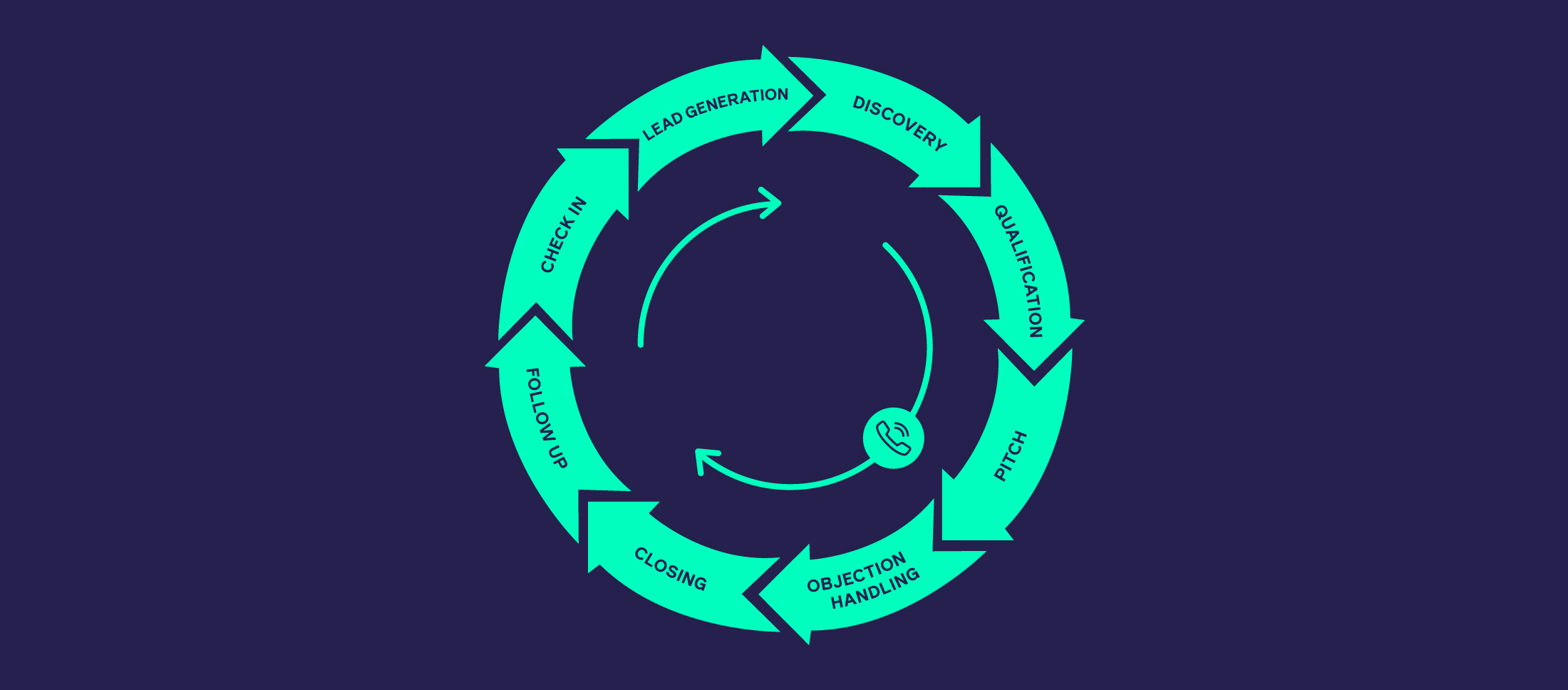The Ultimate Strategy for B2B Online and In-Store Marketing In 2020
The world had high expectations from 2020. The OPEC countries dropped the oil prices this year. The stock market of the United States, France, and India was in their all-time highs at the beginning of the year. The world cooperation bolstered and countries were looking forward to multilateral relations. This year had Olympics, Cricket leagues, etc. The scope for business was very high this year. But by the end of January, a virus outbreak hit the globe. Hence this year has many ups and downs. The performance of businesses this year will be interesting to look at. This piece of work deals with the B2B sales strategy in 2020.
So what exactly do B2B sales imply to you? It sounds like a complex business algorithm but it is not. B2B Sales is an abbreviation of Business to Business sales. In commerce, this means the supply of products and services from business to business. This means there is no role of final consumers in this chain. Where the selling intends to the final consumers, it is B2C sales. This supply is undertaken through retail outlets and stores.

B2B sales have an altogether different concept. A business may want goods and services for final selling or further production. Hence, it could be either for production or procurement. Having said that, it is very clear that the B2B sales strategy is very different from direct selling. Selling to the final consumers is a lot easier in comparison to selling to businesses.
B2B sales vs B2C Comparison-

As we know, B2B is from business to business while B2C is from business to consumers. The basic difference here is visible. B2B delivers to other businesses. But B2C delivers to final consumers of the products.
Sales Strategy
Another major difference that sets them poles apart is the sales strategy used in both of them. When we talk about B2C sales, it is easy in comparison to B2B sales. The reason is that the delivery is to the final consumers. And luring consumers is a bit easy in comparison to luring businesses. When the selling intends to the final consumers, the only essential thing is to develop a need. As soon as you develop a need for your product or services amongst the consumers, you win. This is even easier when your product or service is innovative or new in some ways.
Complex Procedure
The point to note here is that creating a need for your product is any day easier than proving your product. This is exactly what you are thinking. When selling has to be undertaken for another business, you need to prove your product to them. When a business enters into a deal of buying something, they are very diligent in that matter. After all, that deal can affect the future profitability of that business in that year. It is a tedious process to supply a product or a service to another business. This is because they have a better knowledge of negotiation and bargaining.
Profit Motive
Unlike customers who pay for the utility they derive, businesses pay to get a profit. Hence cracking a deal with another business is hard as hell. You need to impress the department heads of the firm you are supplying to. Apart from that, your product has to go through a lot of quality checks. In particular, you have to prove your product. Also, settling the deal to a profitable price is very tough with another firm. This is because both care about their profit margins. The bid and the ask have to meet somewhere and hence one party has to compromise often.
No Retail Distribution
The B2B sales process involves continuous negotiation, product analysis, durability tests, credit settlement, and much more. This process even sometimes takes months. There are hence special teams dedicated to this work in the firms that supply to other firms. But a benefit that firms get in the B2B sales is that they do not have the fear of changing market taste and trends. The company that supplies other companies does not have to worry about the changing taste and preferences of the final consumers.
At the same time, the dealings in B2B are undertaken in bulk. The deal is for a package of products and not one single commodity. Also, there is no issue with storage and delivery. The transaction takes place in bulk and the burden to take care of the products shifts to the buyer all at once.
Also, you do not have to work on creating delivery channels as you do for final customers. Unlike B2C where the channel has to be created to deliver your products to the customers, B2B does not need all that. Hence they can save up a lot on that. Hence this comparison reflects clear advantages and disadvantages in B2B sales.
How B2B Sales Have Evolved In Recent Times?

In this age of digitization and automation, people no more need to sit together and close a deal for months. Now a single e-mail can turn out to be a game-changer. People, not close deals over states but also overseas. Globalization has turned the world into a big connecting village. And B2B sales have been benefitting from it ever since. The below points elaborate on how the B2B sales have evolved in these couple of years.
Digitization

Now closing a deal overseas can happen overnight. Businesses have equipped themselves to make the greatest use of the internet. Companies have been conducting demos online for their clients. Also, they get approval through a video or a conference call. Virtual models are being created to explain the product and its usefulness. With the entry of Virtual and Augmented Reality, businesses can experience services.
Sales Team
It can be hard to believe, but many teams work in a company to undertake B2B sales. We can classify these teams into inside sales and outside sales. Inside sales are also known as remote or virtual sales. These types of sales take place over call, email, and presentations from far away. But, outside sales are all about frontline selling. This includes meeting with the clients, setting up demonstrations. They have to work at the front end for selling. Not only that, but there are also dedicated teams that work on the engagement of companies. These departments in a company undertake many activities. Training of selling personnel, analyzing the viability of the deal, etc, are some of them.
Smart Buyers
It is not new to say that the buyers are smart these days. Businesses in today’s time know what’s profitable for them in the long term and negotiate as per that. They have their goals pre-identified and hence close the deal at the best possible price and value. This also tells us that coming to a negotiation table is more difficult these days. Unless we please the other party with our products and prove its usefulness, the deal can go nowhere. Today’s buyers are not driven by market sentiments but by rational instincts.
Research
The research did not hold a valuable place in B2B sales a couple of years back. People didn’t even have the motive to undergo market research with regards to B2B sales. But to make it very clear, research is darn important for B2B sales strategy. It is only when you realize the motive of your buyer, you’ll be able to close a deal with profit. For this, a B2B seller has to identify what the final consumers of your buyers need. For this, it is a need to take up a market study and thereby find out the prospects in the current market. Research is hence an essential element of any sales strategy.
The Modern-Day B2B Sales Process

To devise a B2B sales strategy, it is important to realize the steps involved in a B2B sales process. Marketing and selling are as interesting as they could be. Selling in today’s time is not a mere step delivery process. It is something more than that. Companies these days follow a clear path to go about these sales. This process includes several steps that ensure the right negotiation, deal, and price. Below is a brief explanation of every step involved in this B2B sales.
1. Research
It is easy to understand that any selling process begins with thorough research. It starts with analyzing the market conditions and the demand for your products. Finding your target market is the primary thing a company should do. Educating oneself and making oneself aware of the market conditions is a must. In the later stages, it is important to think from the perspective of your buyer. When you think like your buyer, you get a bigger picture of the expectation from you and your scope.
2. Finding Prospects
This step is very undermined. Finding prospects means finding your scope in the market. Businesses neglect this process very much in B2B sales. Finding prospects are as essential as looking for the right buyer. Before you go ahead and finish a deal, think about the market prospects of your product. It is not before knowing the worth of your product that you can trade it. When you realize the need for your product and its viability, this a major step in getting you the right deal.
3. Know the Needs
Knowing your needs is a two-way process. It starts with defining your own needs. And this ends with understanding your prospective buyers’ needs. In a supply chain, due diligence is of utmost importance, assessment of need should be a priority. You cannot go one step further without analyzing your needs and of your buyer’s needs. This assessment is essential for positioning of your product in the market. When you can assess the market well, you get a deeper knowledge of your buyer’s needs. Keep your priorities straight when it comes to putting forward your offer.
4. Rejection is usual
You may not realize how effective it can be for you. Before you enter into a supply chain, you’ll have to face a lot of Nos from prospective stakeholders. As a salesperson, it is evident to know that closing a deal is not done through bargaining. You’ll have to come in satisfactory terms and at the same time do not compromise your profits. When your offer isn’t workable by your buyer, you’ll face rejection. Hence, come to a solution where both of you earn profit and nobody loses.
5. Build a Relationship
Your work does not end after the above three steps. In a market-driven by profitability and relationships, it is important to build trust. In selling, building a relationship of trust with supply chain stakeholders is significant. Do not be like any other salesman. Build on your relationships and take advantage of your dynamic business environment. Please your ultimate buyers, they get you the most profit in real terms. With the trust and faith of your stakeholders, you can ensure a strong status of your business in the market.
6. Get the Deal
After al the above processes, it is now time to close the deal. The most important tip to consider here is that never lose a good opportunity. If you believe you are not yet ready, that does not mean you’ll let go of an amazing opportunity. A good opportunity is always a one-time shot. In this hustle of research and analysis, do not lose a profitable deal. Now after you know what you exactly want, it is the time to get to the negotiation table. Give your best shot and crack the deal in your favor. For this, always know the weaklings of the opposite party and leverage on that. But in the end, only a good product will ensure you a great price.
7. Follow up
Following up is a major step in relationship building as well. This process is never-ending. It is a cycle. Keeping a check on your deals is significant. Taking follow-ups from your stakeholders is great for building trust and relationships. Make sure that your product is doing great with your buyer. Ask for reviews and improvement. Consistency is the key to any business activity. Follow up helps you to know your weaknesses and help your product to flourish in the longer term.
B2B Sales Strategy Techniques

After understanding the process, we know the gist of B2B sales. It is now the time to learn about the key B2B sales strategy in this supply chain cycle. Below is a list of 14 most effective B2B sales strategies that most businesses use. A major consideration is strategies are contingent on changes in the business environment. No strategy except vision and optimization can tackle changes in the business environment. Hence these strategies would work best if the market analysis is right and accurate. In the wake of the current market situation in 2020, a firm has to keep improvising. It is important to adjust strategies from time to time to make the best sales efforts. Only through improvisation, one can succeed in this time of cut-throat competition. Another important aspect is that not all selling strategies can be of every business’s use. It varies in terms of the line of products they are dealing with. One should also consider other factors while applying strategies in a business cycle.
Momentum is a must
Keeping momentum means continuity of expansion. When you execute a deal and find a loyal buyer, the cycle does not end here. To keep this cycle moving, find new buyers for your product in the market. Keep exploring every facet of supply chain management. It is very essential to keep in mind the importance of building relationships here. You cannot survive in the market through one loyal customer. You have to keep going and keep filling gaps in this supply chain cycle. This helps when by chance you lose a customer. Even if you lose a buyer in this course, you have the assurance of others. Since you did not stop making new relationships, you did not risk your supply cycle.
Creative Content
Major business houses deploy approximately 20-30 percent of their budget into content creation. Content creation is value creation. When you give out useful content about your business on the web, you create value for your business. Your content helps to attract buyers and can help you stand out from the rest. The useful information you put up online can do wonders in your favor. If your content is engaging and has created value for your customers, you have an upper hand in it. Creating a website and updating it with meaningful content can be the best idea. The entire world uses content marketing these days. Hence, you have to do something uncommon to stand out. Innovate new content and leverage upon that.
Social Media Marketing
It is crystal clear how the internet has taken over the whole world. A recent survey is on the number of people that use the internet all around the globe. The results were shocking. In 2020, approximately 59% percent of the world population has access to the internet. Another survey shows that companies spend approximately 15% of their budget on social media marketing.
Social media platforms like Twitter, Instagram, LinkedIn help businesses to get popularity. They provide you exposure. More than that, social media helps create your presence in front of a large population.
Switch to Video Engagement
YouTube has gained a lot of popularity in recent years. This platform has enabled hundreds and thousands of vloggers to sell their content. That too timelessly and easily. Video content marketing is the new trend of the year. Every business resorts to watching your video before getting in touch with you. This tells us the value of video marketing in these times. Through video, you can present your product to the customer without even getting in touch. The best part about video marketing is that your customers already know what you offer. They already know about you, before getting in talks with you.
Be Astute in Your Business Dealings
An astute businessman can turn every unfavorable situation in its favor. Being a part of the supply chain, it is very common to get rejection a lot of times. Buyers have many arguments ready to overpower the deal. They can manipulate the trade in their favor. The key to saving your deal is to keep answers to all possible arguments ready. This is something that comes with experience and not possible to develop overnight. But always prepare yourself against all possible bargaining tactics. These could be harmful to your profits. Every effort fails if you get played on by the buyers. Know how to crack a deal and stick to your priorities.
Improve the lead generation
Lead generation is a process that people use in the marketing field. Lead is an inquiry by prospective customers. Every company has a lead generation team. This means that the team gathers all inquiries. This team generates leads and transfers it to the people at the sales frontier. The sales frontier then tries to convert the leads. It is through emails, phone calls, etc.
Improvement in lead generation can get a lot of customers very soon. This also impacts the performance of sales personnel in the company.
Generate Quality Leads
According to a survey in the United States of America, 78% of leads never turn good. this means that a major chunk of the leads does not turn into sales. This is harmful to the company. This is because the team can waste a lot of time trying to convert low-level leads without any result. In the meantime, one can lose a great opportunity. An efficient lead generation team is a must in a company. Adopt best practices to filter the leads before sending them for conversion. Yet you should always give a try on the best of the worst leads. Because there might be a high chance of conversion, and a great deal.
Embarkation of Offline Sales
The salesperson works offline in various provinces and cities of the countries. These salespersons should be restricted to a particular geographical location. This means that to allow a group of offline salesmen to work in one area. This is the embarkation of marketing territory. This is important so that every group focuses on their particular territory. This leads to the fostering of lead conversion chances. Working offline is a heavy task. It is significant to use the manpower in this field with extreme diligence.
Get hold of the Buyer’s Nerve
This is not exactly what it sounds like. The nerve of a businessman is his business. Get hold of the nerve. Get hold of the thing that he cares about the most. These are the growth and profitability of his firm. If your product can change the fortune of your buyer’s firm, he’s in your hand. Make the right arguments, present luring facts, and get hold of their nerve. The key to this is knowing what your customer wants. Also, it is important to access what is most important for your customers. This is because not all customers do not want cheap products and not all care about profit.
You Get What You Give
Be faithful to your stakeholders. In the course of building a relationship with your customers, trust is the key. How so ever advanced us get, the essence of interpersonal relationships would still be unbeatable. Advice your customers on their business. Share valuable market insights. Do not ditch or mislead your customers. If you take care of your customers, they will take care of you. Help them in their financial emergency. Collaborate with them for the betterment of both the businesses. But in all this, do not forget that you are still a businessman. Do not risk your concern for anyone.
Mitigate Risk
Mitigating risk means not relying on only one commodity or only one customer. It also means not entering into risky transactions that have a scope of turning bad. Always remember that B2B sales are riskier than B2C sales. This is because, in B2B, both are businesses. And for the obvious reasons. Both businesses would want to make a profit. Whenever you get an amazing offer, be cautious. No business is going to help you without a selfish motive behind it. Be diligent while closing a deal. Also, never rely on one single buyer. In case you both are no longer in dealings, your business might get a jolt.
Sales Enablement Strategies
Sales enablement strategies are simple. This means to provide ample content and information to the sales team to close the deal. An efficient lead generation team always supplements sales enablement. Providing the salesperson with all the data can help them convert the leads with ease. This also has another aspect. It also includes providing ample content to your buyers. Buyers feel more comfortable while dealing with such providers. If you have all the content and information ready that is valuable to the buyer, you get the deal. A psychological fact is when you feed your customers with content, they get a sense of security.
Know the Right People to Influence
Every company has those top-level seniors that make all the decisions. Before you get to the table, do thorough research. Check out your customer’s website and find out who those people are. Identify these key personnel and intend all your sales promotion to them. Influencing the wrong man would earn you nothing. It is a waste of time if the people who make the decisions do not get convinced. Give all the information about that person to your selling team. Remember to make your presence and need felt. The last thing here to consider always targets that one man who has a greater say in all the matters of the company. Make them feel that there’s no one better in the market.
Training of the Personnel
Remember that your attitude can turntables. If your salesperson knows how to interact with the customers, the deals are easy to close. Assertiveness and affirmation in speech are very important to some extent. This does not mean to dominate the other party but to show confidence. Your salespersons need to be presentable and well-versed with the regional languages. Unless you can make your customers comfortable, the trade is hard to begin. Your attitude measures your altitude. Appear confident, be presentable. At the same time do not forget to assert your objectives to the customers. The last and the most important thing to carry is a smile. Smile more often and get that deal.
Things to Avoid in B2B Sales Strategy

When talking about the strategies of B2B sales, it is important to note the Do Nots in this area. Being a supplier, you have to refrain from many practices. These practices can not only harm the firm’s profitability but also make dealings much riskier. Hence, as a selling company, one must know the things to stay away from. Below is a list of all the Do Nots from which a firm should refrain.
Don’t Miss a Golden Chance
A golden chance is a once in a lifetime opportunity. When this opportunity comes, you better be ready. Analyzing every deal is rational. This is important for companies that deal with complex products. These companies need a lot of time to assess any deal. But letting go of an opportunity because you weren’t sure is a disaster. One should never let go of an amazing opportunity, even if one is not ready for it. You cannot assess what these opportunities can bring you. Do not take the leads lightly. If there is even a 30% chance of conversion, go for it. Give your best and then choose.
Do not Compromise with the Product
Always remember that your product is your unique selling point. You can deploy many strategies but you still have to focus on the product. In the end, it’s the product that customers want from you. Create value over time. Do not compromise with the quality of your product. If you take chances with your product, you are out of the market. All other sales strategies fail if the product is not in line. Your product maintains your market position. If you lose your unique selling point, you lose the business. Yet if you are good in business, it doesn’t matter. If your products can’t fulfill your buyer’s needs, it is useless.
Undermining Follow-Ups
This is a mistake that most business houses do. Not taking a follow up is like not taking the results of your exam. The follow up you take lets you know about how your product is performing. This is very important when you want to know the position of your products. It is important otherwise as well. Taking follow-ups are necessary to ensure good relationships. If you are not worried about how well your buyer is doing with your product, you lose that relationship. Follow-ups are self-assessments. It reflects what the market wants from you. Never miss any follow-up or review report.
One Golden Strategy
If you believe that you can get away with one single strategy, you can not. The business environment is dynamic. Trends come and go and one has to adjust the strategies as per that. One single strategy cannot give you success for long. You need to improvise and adapt at regular intervals to survive in the market. A strategy may be useful, but it is dangerous to rely on it every time. Every deal and every circumstance needs new methods and new techniques. In the business world, change is the only constant phenomenon.
Stay away from Low-Key Buyers
Do not settle a deal with someone whom you cannot trust. The new market payers that enter with a bang, always end up defaulting. Low-key buyers don’t have enough budget to tie up with your business. When their budget is low, payment is on a credit basis. Since these are new firms in the market, they might default. It is important to analyze the prospect of the company you are dealing with. Once you end up with a low budget company, your risk increases.
It is important to avoid certain practices in B2B sales. The above list contains major Do Nots in this particular field. A business in B2B sales has to work very hard. It is not like B2C but a lot more complex. Selling products or services is not easy here. A lot of plans, strategies are useful in this course.
The 2020 Global Pandemic

Talking about the year 2020, this year began with great hopes of market booms. But later by the end of the first quarter of 2020, the world is hit by a pandemic disease that is spreading very fast. This pandemic has sabotaged the growth and routine working of all businesses.
In these times, businesses got a major jolt. But as we all know, a business cannot be put to a hold. Working in this sensitive time is important. If you keep aside your business for a while, it will have critical results in the future. Below is a brief study on how you can continue with your business in this situation. Remember, there’s always a way out there to get going. Here we will be discussing the possible ways through which one can continue its business.
- Go digital
In this pandemic, there is no way one can step out and do regular operational work. Can’t meet clients? Do a video conferencing. Focus on the online content you generate for your customers. Make a system through which all your employees can work from home. Now, this is not the right time to work offline. Ask your employees to punch in at a particular time. Check on them through conference calls and regular mails.
- Take the Loss
It’s alright to bear the losses. Do not get upset because of these. Losses are always better than stagnation. It’s the time everyone will incur losses. Do not stop your daily work due to fear of losses. A downtrend is always preferable than no trend. This is not the time to gauge profits. This is the time to continue being in the market.
- Understand Other’s Concerns
You are not alone in this situation. Many people like you are struggling to work. It is hard to make a balance between work and personal life these days. Don’t be rude to your employees. If they are with you in this pandemic situation, you should respect them. Try bearing their allowance for a while. Never forget that you get what you give.
- Take Care
Take good care of yourself and your employees. Your employees are your only assets. Building a strong relationship with them will ensure long-term growth. There’s nothing more important than life. Take precautions. Show empathy. It’s time for community building and helping each other.
Hence these are a few tips on how to keep your business going in these times. Working in these conditions is not easy. You are already consuming so much of information daily. The news isn’t good to look at these days. Give yourself some time. Take your business slow and steady. Do not rush for profits, it will follow.
Conclusion

B2B sales are a common yet complex trade. There are many strategies to ensure the smooth functioning of the B2B supply chain. These strategies are important for every business. A major point to consider here is that these strategies are not universal. One has to improvise these strategies as per circumstances. There is no one golden strategy here. Choosing a group of strategies is at the discretion of the business. At the same time, there are some things that a business should refrain from. These practices may be toxic for your profitability and growth. Also, at the time of the pandemic when business is at the halt, be patient.




